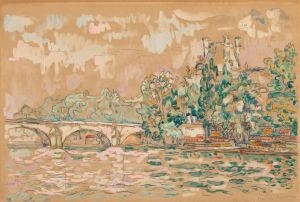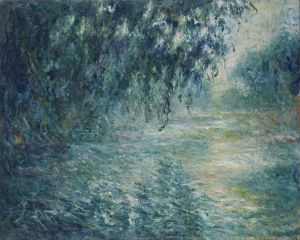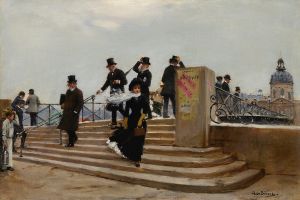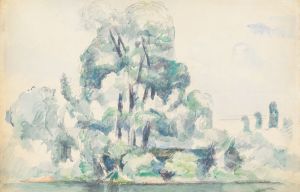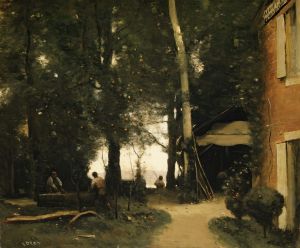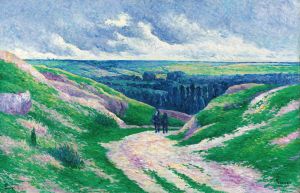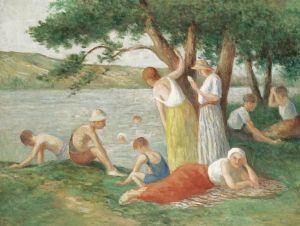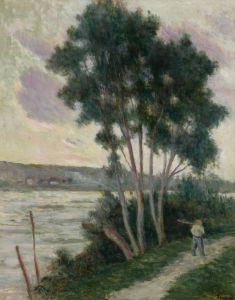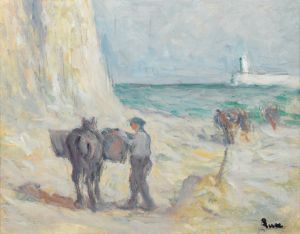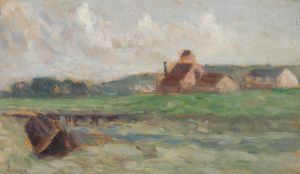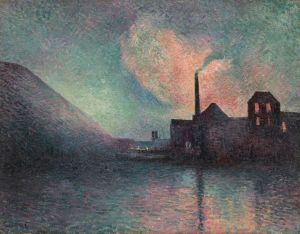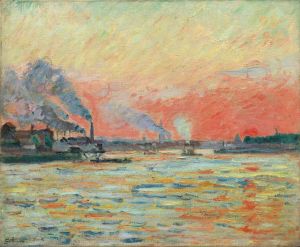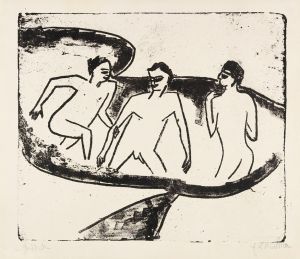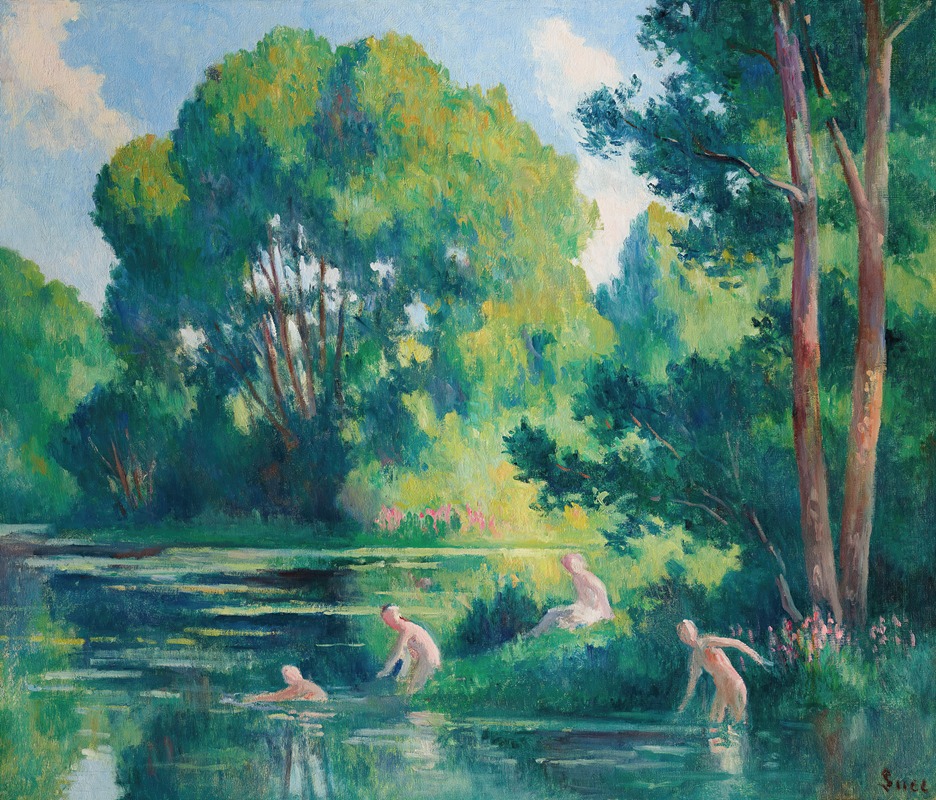
Rolleboise, baignade dans le petit bras de la Seine
A hand-painted replica of Maximilien Luce’s masterpiece Rolleboise, baignade dans le petit bras de la Seine, meticulously crafted by professional artists to capture the true essence of the original. Each piece is created with museum-quality canvas and rare mineral pigments, carefully painted by experienced artists with delicate brushstrokes and rich, layered colors to perfectly recreate the texture of the original artwork. Unlike machine-printed reproductions, this hand-painted version brings the painting to life, infused with the artist’s emotions and skill in every stroke. Whether for personal collection or home decoration, it instantly elevates the artistic atmosphere of any space.
Maximilien Luce was a prominent French Neo-Impressionist painter known for his vibrant depictions of everyday life and landscapes. Born in Paris in 1858, Luce was initially trained as an engraver before turning to painting. He became associated with the Neo-Impressionist movement, which was characterized by the use of pointillism—a technique involving the application of small, distinct dots of color to form an image. This method was developed by Georges Seurat and Paul Signac, and Luce became one of its most dedicated practitioners.
"Rolleboise, baignade dans le petit bras de la Seine" is one of Luce's notable works, capturing a serene scene along the Seine River. Rolleboise is a small commune located in the Île-de-France region, known for its picturesque landscapes and proximity to the Seine. The painting depicts a group of people bathing in a small branch of the river, a common leisure activity during the late 19th and early 20th centuries in France. This scene reflects Luce's interest in portraying the leisurely pursuits of the working and middle classes, a theme prevalent in his body of work.
Luce's technique in this painting is emblematic of the Neo-Impressionist style. He employs pointillism to capture the play of light on water and the surrounding environment, creating a vibrant and dynamic composition. The use of small, distinct brushstrokes allows for a rich interplay of colors, giving the scene a sense of movement and vitality. The painting's composition is carefully structured, with the figures and natural elements harmoniously integrated into the landscape.
The choice of subject matter in "Rolleboise, baignade dans le petit bras de la Seine" is significant as it reflects the broader social and cultural changes occurring in France during this period. The late 19th century was a time of industrialization and urbanization, leading to a growing appreciation for nature and outdoor leisure activities among city dwellers. Artists like Luce captured these moments of respite from the bustling city life, highlighting the simple pleasures found in nature.
Maximilien Luce was not only an artist but also an active political figure. He was known for his anarchist beliefs and often depicted scenes that emphasized the dignity and resilience of the working class. His political views influenced his choice of subjects, as he frequently portrayed workers, laborers, and everyday people in his art. This commitment to social themes is evident in "Rolleboise, baignade dans le petit bras de la Seine," where the focus is on ordinary people enjoying a moment of leisure.
Throughout his career, Luce remained committed to the principles of Neo-Impressionism, even as other art movements emerged. His dedication to capturing the effects of light and color, combined with his interest in social themes, made him a distinctive voice in the art world. Luce's works are celebrated for their technical precision, vibrant color palette, and ability to convey the essence of everyday life.
"Rolleboise, baignade dans le petit bras de la Seine" exemplifies Maximilien Luce's artistic vision and his ability to capture the beauty and simplicity of life along the Seine. The painting remains a testament to his skill as a painter and his commitment to depicting the world around him with honesty and empathy.





